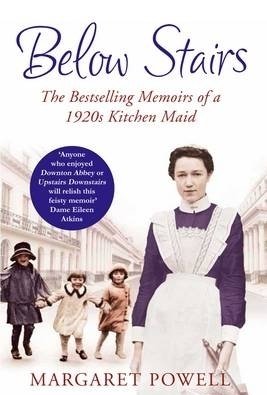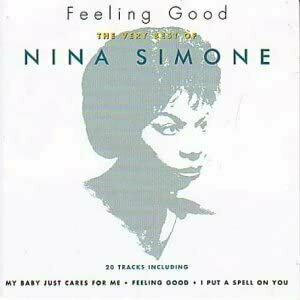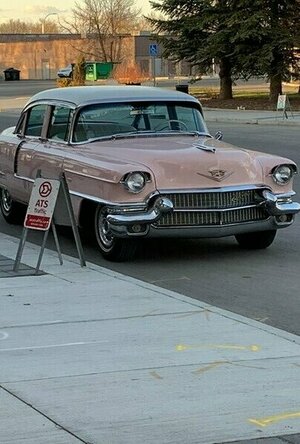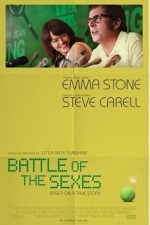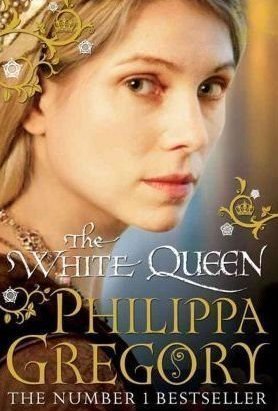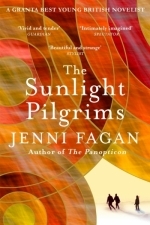Search
Search results
Dianne Robbins (1738 KP) rated Below Stairs: The Bestselling Memoirs of a 1920s Kitchen Maid in Books
Sep 3, 2018
Margaret Powell's memoir Below Stairs is growing up in a poor in money but rich in love with her family in a small village near London, England and her life in domestic service in the 1920s. It is simply wonderful. Her other memoirs Climbing the Stairs and Servants Hall and her Cookery Book are next on my list. It's more like listening to your favorite aunt sitting at the kitchen with you over fresh-baked cookies and glasses of homemade lemonade while retelling stories of her childhood and life in the early part of the 20th century. You HAVE to read it!. Julian Fellowes read her books and they were the inspiration behind the extremely popular BBC series Downton Abbey, that is watched by us in the states on PBS Masterpiece.
Tim Booth recommended Feeling Good: The Very Best of Nina Simone by Nina Simone in Music (curated)
Bob Mann (459 KP) rated Let Him Go (2020) in Movies
Dec 23, 2020
Feud for Thought
After a family tragedy for the Blackledge family, grandparents George (Kevin Costner) and Margaret (Diane Lane) are left to bring up baby Jimmy (Bram and Otto Hornung) with mother/daughter-in-law Lorna (Kayli Carter). But a few years later, Lorna marries bad-un Donnie Weboy (Will Brittain) and disappears back to Donnie's hillbilly extended family in the wilds of North Dakota, led by the fearsome Blanche Weboy (Lesley Manville). Fearing for the child's wellbeing, Margaret drags retired Sheriff George on a dangerous journey to rescue the child.
There are strong similarities in this story with a sub-plot of the excellent "Ozark", where the psychopathic Darlene Snell (Lisa Emery) is intent on having a child to grow up with on her remote ranch. The sense of tension there is recreated here, exacerbated by the movie's extremely slow (read "glacial") pace in its early stages. It's the same sort of rising dread that I felt with "Nocturnal Animals". This reaches its peak at a tense standoff over lamb chops at the Weboy ranch, but we are probably half-way into the film by then.
The slow pace however is broken by a couple of extremely violent scenes that earn the movie its UK-15 certificate. One (no spoilers here!) harks back to another Kevin Costner blockbuster where he was a bit luckier! And the finale turns a slightly sleepy tale of "two old folks" into an 'all guns blazing' action western that's highly unexpected. Although you could argue that this is tonally extremely uneven, it works and makes the movie a lot more memorable than it otherwise would be.
The standout leading performance here is the one from Diane Lane as the mentally tortured Granny pursuing her convictions across the country. Here writer/director Thomas Bezucha gives the character full rein. It's a memorable 'strong female' part, that would have been dominated by the male lead in the writing of films a few years back. Lane delivers a dramatic and rock-solid performance that has Oscar nomination written all over it.
I'm also a big fan of Kevin Costner, not just because he's a solid and reliable actor over many years. I always remember him gamely appearing as "The Postman"/'propeller-guy' in Billy Crystal's hilarious montage opening for the 70th Academy Awards. Anyhow, here he has his meatiest dramatic role in many years, and delivers fully on it. Top job, although I suspect this may not be his year for his elusive Best Actor award.
Finally, rounding out the Oscar hopefuls is the brilliant Lesley Manville as Blanche Weboy. It's a dream of a role for the Brighton-born star, nominated of course for the Best Supporting Actress two years ago for "Phantom Thread". And she is genuinely chilling here, firing on all cylinders like some sort of deranged Bette Davis on speed. She's used sparingly in the movie, but that makes her scenes all the more memorable. Another nomination perhaps? I'd predict so, yes.
I found this to be an uncomfortable watch, since I found myself in a moral quandary with the storyline. It's clear that Margaret is genuinely concerned for the safety of Jimmy (and less so, Lorna). Yet, what she is ultimately prepared to do is consider child abduction, when the law if probably on the side of the other party. Sure, the lifestyle and attitudes of the Weboys are alien to this more traditional "Granny". But although Blanche rules with a Victorian-level of grit, isn't she - at least before any of her more vicious tendencies emerge - entitled to do that? The film firmly roots itself behind the Blackledge's as "the good guys", but the script cleverly has you questioning that at various points,
Two technical categories in "Let Him Go" are also worthy of note. The cinematography is by Guy Godfree, and the sweeping vistas of Montana and North Dakota (actually Alberta in Canada!) are gloriously delivered. And the music by Michael Giacchino - one of my favourite composers - is cello-heavy and fitting for the sombre storyline. I always assess the quality of a score by whether I annoy the cinema cleaners by sitting until the last of the end credits have rolled, and this is one I did that to.
As the last movie I see before Christmas, "Let Him Go" is not exactly a feelgood festive offering. It's a well-crafted and thoughtful story, but not one to make you feel good inside, for the reasons outlined above. If you are a movie-lover though, then it's an interesting watch, if only for the fine acting performances on offer.
(For the full graphical review, please check out the "Bob the Movie Man" review on the web here - https://bob-the-movie-man.com/2020/12/23/let-him-go-is-not-a-joyous-affair-but-delivers-oscar-worthy-performances/. Thanks.)
There are strong similarities in this story with a sub-plot of the excellent "Ozark", where the psychopathic Darlene Snell (Lisa Emery) is intent on having a child to grow up with on her remote ranch. The sense of tension there is recreated here, exacerbated by the movie's extremely slow (read "glacial") pace in its early stages. It's the same sort of rising dread that I felt with "Nocturnal Animals". This reaches its peak at a tense standoff over lamb chops at the Weboy ranch, but we are probably half-way into the film by then.
The slow pace however is broken by a couple of extremely violent scenes that earn the movie its UK-15 certificate. One (no spoilers here!) harks back to another Kevin Costner blockbuster where he was a bit luckier! And the finale turns a slightly sleepy tale of "two old folks" into an 'all guns blazing' action western that's highly unexpected. Although you could argue that this is tonally extremely uneven, it works and makes the movie a lot more memorable than it otherwise would be.
The standout leading performance here is the one from Diane Lane as the mentally tortured Granny pursuing her convictions across the country. Here writer/director Thomas Bezucha gives the character full rein. It's a memorable 'strong female' part, that would have been dominated by the male lead in the writing of films a few years back. Lane delivers a dramatic and rock-solid performance that has Oscar nomination written all over it.
I'm also a big fan of Kevin Costner, not just because he's a solid and reliable actor over many years. I always remember him gamely appearing as "The Postman"/'propeller-guy' in Billy Crystal's hilarious montage opening for the 70th Academy Awards. Anyhow, here he has his meatiest dramatic role in many years, and delivers fully on it. Top job, although I suspect this may not be his year for his elusive Best Actor award.
Finally, rounding out the Oscar hopefuls is the brilliant Lesley Manville as Blanche Weboy. It's a dream of a role for the Brighton-born star, nominated of course for the Best Supporting Actress two years ago for "Phantom Thread". And she is genuinely chilling here, firing on all cylinders like some sort of deranged Bette Davis on speed. She's used sparingly in the movie, but that makes her scenes all the more memorable. Another nomination perhaps? I'd predict so, yes.
I found this to be an uncomfortable watch, since I found myself in a moral quandary with the storyline. It's clear that Margaret is genuinely concerned for the safety of Jimmy (and less so, Lorna). Yet, what she is ultimately prepared to do is consider child abduction, when the law if probably on the side of the other party. Sure, the lifestyle and attitudes of the Weboys are alien to this more traditional "Granny". But although Blanche rules with a Victorian-level of grit, isn't she - at least before any of her more vicious tendencies emerge - entitled to do that? The film firmly roots itself behind the Blackledge's as "the good guys", but the script cleverly has you questioning that at various points,
Two technical categories in "Let Him Go" are also worthy of note. The cinematography is by Guy Godfree, and the sweeping vistas of Montana and North Dakota (actually Alberta in Canada!) are gloriously delivered. And the music by Michael Giacchino - one of my favourite composers - is cello-heavy and fitting for the sombre storyline. I always assess the quality of a score by whether I annoy the cinema cleaners by sitting until the last of the end credits have rolled, and this is one I did that to.
As the last movie I see before Christmas, "Let Him Go" is not exactly a feelgood festive offering. It's a well-crafted and thoughtful story, but not one to make you feel good inside, for the reasons outlined above. If you are a movie-lover though, then it's an interesting watch, if only for the fine acting performances on offer.
(For the full graphical review, please check out the "Bob the Movie Man" review on the web here - https://bob-the-movie-man.com/2020/12/23/let-him-go-is-not-a-joyous-affair-but-delivers-oscar-worthy-performances/. Thanks.)
Gareth von Kallenbach (980 KP) rated Battle of the Sexes (2016) in Movies
Jul 11, 2019
1972: Billie Jean King (played brilliantly by Emma Stone) just became the Grand Slam Champion of the Women’s Tennis Association. She had challenged the inequity of pay between the Men’s and Women’s Tennis Tour. Once she learns that the tournament for the Lawn Tennis Association is paying Women one eighth of the Men’s purse. She goes up against Jack Kramer (Bill Pullman at his misogynistic best). Billie, with her Manager, Gladys Heldman (Sarah Silverman in spectacular form echoing a more subdued version of Bobbie Fleckman) leave the LTA and start their own Women’s Tour. Which became the Virginia Slims tournament.
Around the same time, Bobby (Steve Carell, playing Riggs like a manic Pagliacci) the once Pro Slam Champion who now works in a nondescript office at his father-in-law’s business. Bobby, the dreamer, is a gambler figuratively and literally. The man who’s inner child has taken the reins on the run. He is the clown who needs constant attention, and the showman who could sell the Golden Gate. Carell, gives an exceptional performance, riling us up with cringe-worthy moments and showing us the man that is so certain of his abilities that he forgets the fable of the tortoise and the hare.
We are brought into relationships that these two athletes have with their families and loved ones. Of what they went through before the epic, world famous Battle of the Sexes in the Houston Astrodome. The film serves us a picture of the time where women had recently began the feminine movement and Women’s Liberation. The entire feel of the movie is set solidly in the seventies, the sexism rampant and accepted as the status quo. Misogyny is socially acceptable and Riggs and friends epitomize the attitude.
There is also the story of Billie Jean, realizing an attraction to a woman she meets before the starting her tour. Marilyn (Andrea Riseborough was magnetic), the hairdresser that was instantly drawn to Billie. We also get the treat of seeing the magnificent Alan Cumming as Ted, the charming designer of the women’s fantastic tennis outfits. Wallace Langham as Henry, the tailor.
The story is built up to the historic Battle of the Sexes at the Astrodome. We see the work that Billie does in preparation. Daily drills and practice games. Bobby’s confidence in his ability to deliver a win that mirrored the decimation of Margaret Court (Jessica McNamee) who at the time was the top female tennis player in the world.
The directing duo of Jonathan Dayton and Valerie Faris (Little Miss Sunshine) delivers us a well balanced, heartfelt film with a stellar cast. The soundtrack brings us into the early seventies and the costuming is quantum leap back to the time where polyester leisure suits and colorful shirts were the height of fashion. This is a love story of Billie Jean King and Tennis
Around the same time, Bobby (Steve Carell, playing Riggs like a manic Pagliacci) the once Pro Slam Champion who now works in a nondescript office at his father-in-law’s business. Bobby, the dreamer, is a gambler figuratively and literally. The man who’s inner child has taken the reins on the run. He is the clown who needs constant attention, and the showman who could sell the Golden Gate. Carell, gives an exceptional performance, riling us up with cringe-worthy moments and showing us the man that is so certain of his abilities that he forgets the fable of the tortoise and the hare.
We are brought into relationships that these two athletes have with their families and loved ones. Of what they went through before the epic, world famous Battle of the Sexes in the Houston Astrodome. The film serves us a picture of the time where women had recently began the feminine movement and Women’s Liberation. The entire feel of the movie is set solidly in the seventies, the sexism rampant and accepted as the status quo. Misogyny is socially acceptable and Riggs and friends epitomize the attitude.
There is also the story of Billie Jean, realizing an attraction to a woman she meets before the starting her tour. Marilyn (Andrea Riseborough was magnetic), the hairdresser that was instantly drawn to Billie. We also get the treat of seeing the magnificent Alan Cumming as Ted, the charming designer of the women’s fantastic tennis outfits. Wallace Langham as Henry, the tailor.
The story is built up to the historic Battle of the Sexes at the Astrodome. We see the work that Billie does in preparation. Daily drills and practice games. Bobby’s confidence in his ability to deliver a win that mirrored the decimation of Margaret Court (Jessica McNamee) who at the time was the top female tennis player in the world.
The directing duo of Jonathan Dayton and Valerie Faris (Little Miss Sunshine) delivers us a well balanced, heartfelt film with a stellar cast. The soundtrack brings us into the early seventies and the costuming is quantum leap back to the time where polyester leisure suits and colorful shirts were the height of fashion. This is a love story of Billie Jean King and Tennis
Deborah (162 KP) rated The White Queen (The Plantagenet and Tudor Novels, #2) in Books
Dec 19, 2018
Not quite sure why I decided to read this as the only other book I've read by Gregory was The Other Boleyn Girl, which I thought was pretty dreadful. I suppose I find it difficult to keep away from anything connected with The Wars of the Roses; I certainly found that I'd read almost every book listed in the bibliography and could have recommended a few more that might have been beneficial for the author to have perused.....
While not the worst book I've ever read I know I won't be reading this again and as to The Red Queen - well, I'd probably want to strangle Margaret Beaufort before the first chapter was out, so let's leave it at that shall we.
I do read a lot of historical novels and in general I find that it is much harder for a novel to work well when it is written in the first person, as this is. With a single viewpoint you are restricting yourself and that shows here at several points where the author has to break out of the Elizabeth Woodville narrative to give us a chunk of what is going on elsewhere. I've never found EW a particularly sympathetic historical character and I'm not sure she comes across that well here, either. Certainly in the latter half of the book it's difficult to see what motivation Gregory is ascribing to her.
The family of EW's mother did believe themselves descended from a water goddess and it was not unusual for powerful women to be accused of witchcraft, to discredit either them or their husbands (see Eleanor Cobham). I daresay that mixing of love potions and use of figures and all that sort of thing would have gone on, but the whistling up of storms was going just a bit too far for me. I also thought that the Foreshadowing element of the story was a bit overdone - although that may be because I know too much about the period!
There were also a number of glaring errors and oddities which should have been picked up somewhere down the line. Looks like the favourite one is the anachronistic use of the word 'numpty'! In other places George of Clarence is described as a duke one moment and his wife, Isabel as a countess the next (she would have had that as a subsidiary title, but she was the duchess of Clarence!), an execution was said to have taken place by the axe when the person in question is known to have been hanged, the Parhelion (three suns)are said to have been at Towton when it was in fact at Mortimer's Cross (Towton took place in a snowstorm - I doubt they could see one sun, let alone three!) and Gregory needed to study her history of Barnet a bit more closely as she had her battle lines completely mixed up!
Obviously there are some big gaps in our knowledge, which is grist to the fiction writers mill! I thought her Princes in the Tower solution was interesting and glad to see that she acknowledged that Richard III would have had little to gain from their deaths at this point. Not sure if Lambert Simnel is 'explained' in one of the other books in this series, as EW's part is certainly interesting. Also interesting that although the name of Eleanor Butler is mentioned early on and the anullment of the marriage on grounds of Edward's previous marriage come into play later, the two are never linked by the author and she chooses to offer no comment on this piece of the puzzle.
While not the worst book I've ever read I know I won't be reading this again and as to The Red Queen - well, I'd probably want to strangle Margaret Beaufort before the first chapter was out, so let's leave it at that shall we.
I do read a lot of historical novels and in general I find that it is much harder for a novel to work well when it is written in the first person, as this is. With a single viewpoint you are restricting yourself and that shows here at several points where the author has to break out of the Elizabeth Woodville narrative to give us a chunk of what is going on elsewhere. I've never found EW a particularly sympathetic historical character and I'm not sure she comes across that well here, either. Certainly in the latter half of the book it's difficult to see what motivation Gregory is ascribing to her.
The family of EW's mother did believe themselves descended from a water goddess and it was not unusual for powerful women to be accused of witchcraft, to discredit either them or their husbands (see Eleanor Cobham). I daresay that mixing of love potions and use of figures and all that sort of thing would have gone on, but the whistling up of storms was going just a bit too far for me. I also thought that the Foreshadowing element of the story was a bit overdone - although that may be because I know too much about the period!
There were also a number of glaring errors and oddities which should have been picked up somewhere down the line. Looks like the favourite one is the anachronistic use of the word 'numpty'! In other places George of Clarence is described as a duke one moment and his wife, Isabel as a countess the next (she would have had that as a subsidiary title, but she was the duchess of Clarence!), an execution was said to have taken place by the axe when the person in question is known to have been hanged, the Parhelion (three suns)are said to have been at Towton when it was in fact at Mortimer's Cross (Towton took place in a snowstorm - I doubt they could see one sun, let alone three!) and Gregory needed to study her history of Barnet a bit more closely as she had her battle lines completely mixed up!
Obviously there are some big gaps in our knowledge, which is grist to the fiction writers mill! I thought her Princes in the Tower solution was interesting and glad to see that she acknowledged that Richard III would have had little to gain from their deaths at this point. Not sure if Lambert Simnel is 'explained' in one of the other books in this series, as EW's part is certainly interesting. Also interesting that although the name of Eleanor Butler is mentioned early on and the anullment of the marriage on grounds of Edward's previous marriage come into play later, the two are never linked by the author and she chooses to offer no comment on this piece of the puzzle.
Eilidh G Clark (177 KP) rated The Sunlight Pilgrims in Books
May 13, 2017
Smashing novel
‘What are you meant to do when a humongous cloud is coming toward you on a sheer mountain drop? He lifts his phone and there are no bars, he can’t even google it. Two eagles spiral out of the cloud, calling to each other, and one has something small gripped in it’s claws. They coast on the wind – each wingspan must be about three feet – and they appear almost still.’
Jenni Fagan’s The Sunlight Pilgrims was published by Windmill Books in 2015 and for me, was a much-anticipated novel. After reading her debut novel, The Panopticon, my expectations were high and I was not disappointed. This is a pre-apocalyptic novel set in a fictional Scottish town of Clachan Fells in the not too distant future of 2020. The novel explores the lives of a community of eccentric individuals living in close the proximity of a caravan park. As the temperatures plunge into extreme minuses, the residents are faced with a bleak and uncertain future, not only of their own survival, but also the survival of the human race.
The most interesting thing about this novel is that on the surface, nothing really happens, yet it would be wise to look deeper. Amongst the daily challenges of individual lives, there lurks a thought provoking tale of identity, community, and environment.
The novel is written from the perspective of two of its main characters Stella – a transgender teenager and Dylan a Londoner who recently moves to Clachan Fells. The most interesting thing about these two characters is the perspectives that each individual has about place. For Stella, her world is a difficult place full of prejudice and rejection, even from her own father. Whilst her own personal identity is unquestionable, the community rejects her choices. This point of view provokes the reader to question the nature of identity, a topic often argued when discussing Scotland. From Stella’s point of view, her own identity is progressive, changing, developing while the society around her static. Alistair’s point of view however, allows the reader a modern and open approach. Described in the prologue as the Incomer (notice the capitalization) directs the reader towards Margaret Elphinstone’s novel The Incomer published in 1987. Elphinstone’s novel is a post-apocalyptic tale and, like Fagan’s, novel examines the question of identity. Thomas Christie suggests in Notional Identities, that Elphinstone is ‘depicting the country’s ability to adapt to extreme change¬ ̶ carving a form of localism from the bones of globalisation ̶ she recognises its progressive aptitude to embrace forces of social transformation while retaining recognisable core cultural imperatives.’ It is no coincidence that Fagan has subtly steered the reader to this novel; identity is clearly a topic that the author is keen to explore. Dylan is a progressive character in Fagan’s novel. Discovering Stella identity very early in the novel, the character never questions her choices or that of Mother who has two partners. Likewise, this progressive thinking expands to the other residents of the caravan park, which houses a prostitute, an alien worshipper, and a disabled man with a crooked back who worships the sky. Not only does Dylan accept people for who they are; his deep connection to the environment makes him instinctive as opposed to the more rational thinkers of the world.
Unlike many modern writers, Fagan raises more questions about society and identity than she answers. This is an interesting technique as it leaves the reader to question the novel as opposed to question to authors own political and societal views. That said there is no doubt that this is a Scottish novel. The story is steeped in Scottish mythical symbolism such as the blackbird that lands on a fence post with his eyes reflecting a vast mountain range, to the eagles and stag’s on the mountains. In addition, the characters take on mythical persona’s including a giant, a girl with second sight, and a moon polisher. With oral tales of Sunlight Pilgrims highlighting the Scottish oral storytelling tradition, and a poetic sentence structure done in true Fagan style this novel feels truly Scottish.
I would highly recommend this postmodern novel, which urges the reader to look beyond society and address the problems of ego and the rational mind in order to create a progressive unified world where outsiders are welcomed as incomers – a prevalent issue in today’s society.
Jenni Fagan’s The Sunlight Pilgrims was published by Windmill Books in 2015 and for me, was a much-anticipated novel. After reading her debut novel, The Panopticon, my expectations were high and I was not disappointed. This is a pre-apocalyptic novel set in a fictional Scottish town of Clachan Fells in the not too distant future of 2020. The novel explores the lives of a community of eccentric individuals living in close the proximity of a caravan park. As the temperatures plunge into extreme minuses, the residents are faced with a bleak and uncertain future, not only of their own survival, but also the survival of the human race.
The most interesting thing about this novel is that on the surface, nothing really happens, yet it would be wise to look deeper. Amongst the daily challenges of individual lives, there lurks a thought provoking tale of identity, community, and environment.
The novel is written from the perspective of two of its main characters Stella – a transgender teenager and Dylan a Londoner who recently moves to Clachan Fells. The most interesting thing about these two characters is the perspectives that each individual has about place. For Stella, her world is a difficult place full of prejudice and rejection, even from her own father. Whilst her own personal identity is unquestionable, the community rejects her choices. This point of view provokes the reader to question the nature of identity, a topic often argued when discussing Scotland. From Stella’s point of view, her own identity is progressive, changing, developing while the society around her static. Alistair’s point of view however, allows the reader a modern and open approach. Described in the prologue as the Incomer (notice the capitalization) directs the reader towards Margaret Elphinstone’s novel The Incomer published in 1987. Elphinstone’s novel is a post-apocalyptic tale and, like Fagan’s, novel examines the question of identity. Thomas Christie suggests in Notional Identities, that Elphinstone is ‘depicting the country’s ability to adapt to extreme change¬ ̶ carving a form of localism from the bones of globalisation ̶ she recognises its progressive aptitude to embrace forces of social transformation while retaining recognisable core cultural imperatives.’ It is no coincidence that Fagan has subtly steered the reader to this novel; identity is clearly a topic that the author is keen to explore. Dylan is a progressive character in Fagan’s novel. Discovering Stella identity very early in the novel, the character never questions her choices or that of Mother who has two partners. Likewise, this progressive thinking expands to the other residents of the caravan park, which houses a prostitute, an alien worshipper, and a disabled man with a crooked back who worships the sky. Not only does Dylan accept people for who they are; his deep connection to the environment makes him instinctive as opposed to the more rational thinkers of the world.
Unlike many modern writers, Fagan raises more questions about society and identity than she answers. This is an interesting technique as it leaves the reader to question the novel as opposed to question to authors own political and societal views. That said there is no doubt that this is a Scottish novel. The story is steeped in Scottish mythical symbolism such as the blackbird that lands on a fence post with his eyes reflecting a vast mountain range, to the eagles and stag’s on the mountains. In addition, the characters take on mythical persona’s including a giant, a girl with second sight, and a moon polisher. With oral tales of Sunlight Pilgrims highlighting the Scottish oral storytelling tradition, and a poetic sentence structure done in true Fagan style this novel feels truly Scottish.
I would highly recommend this postmodern novel, which urges the reader to look beyond society and address the problems of ego and the rational mind in order to create a progressive unified world where outsiders are welcomed as incomers – a prevalent issue in today’s society.
